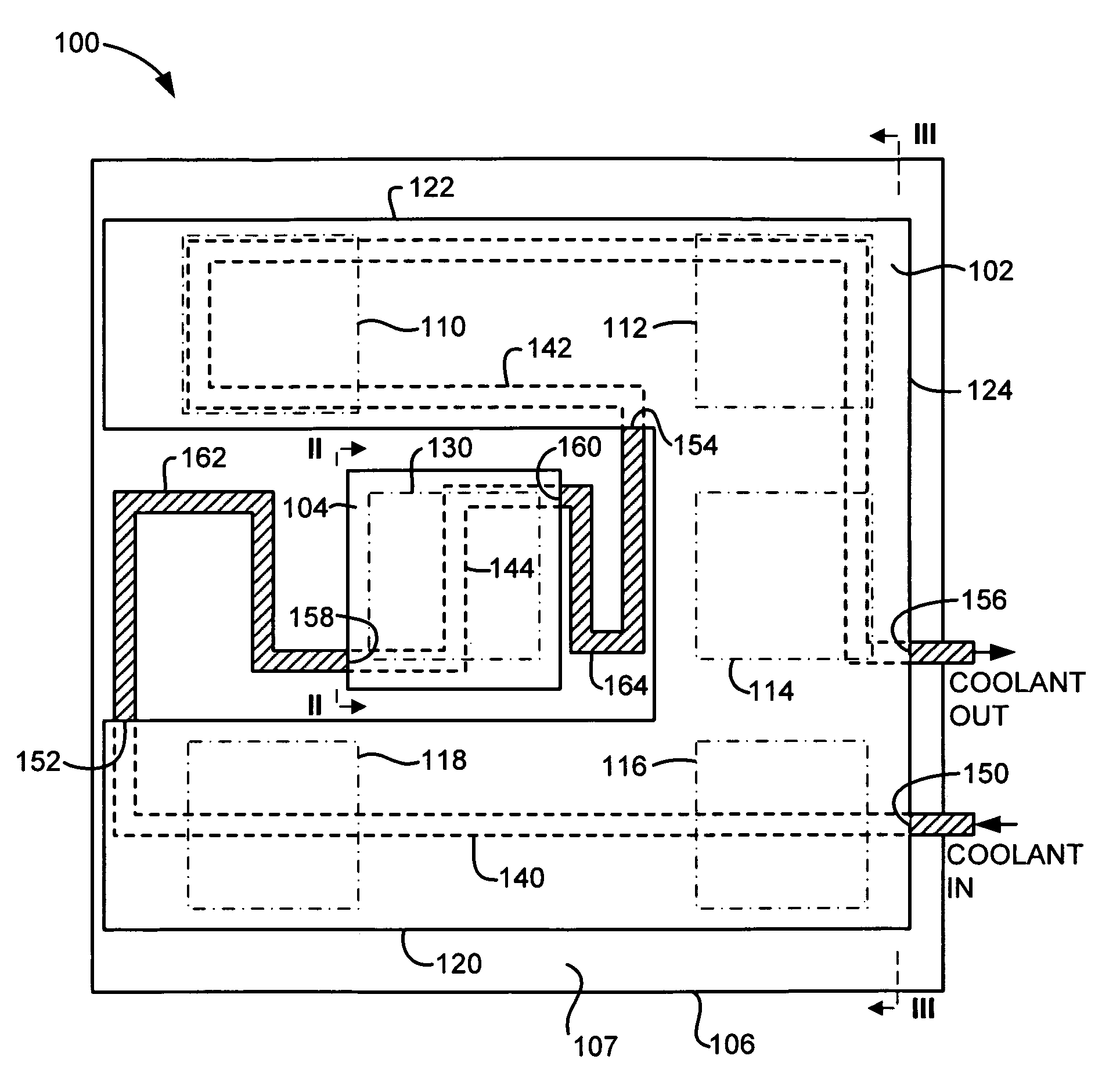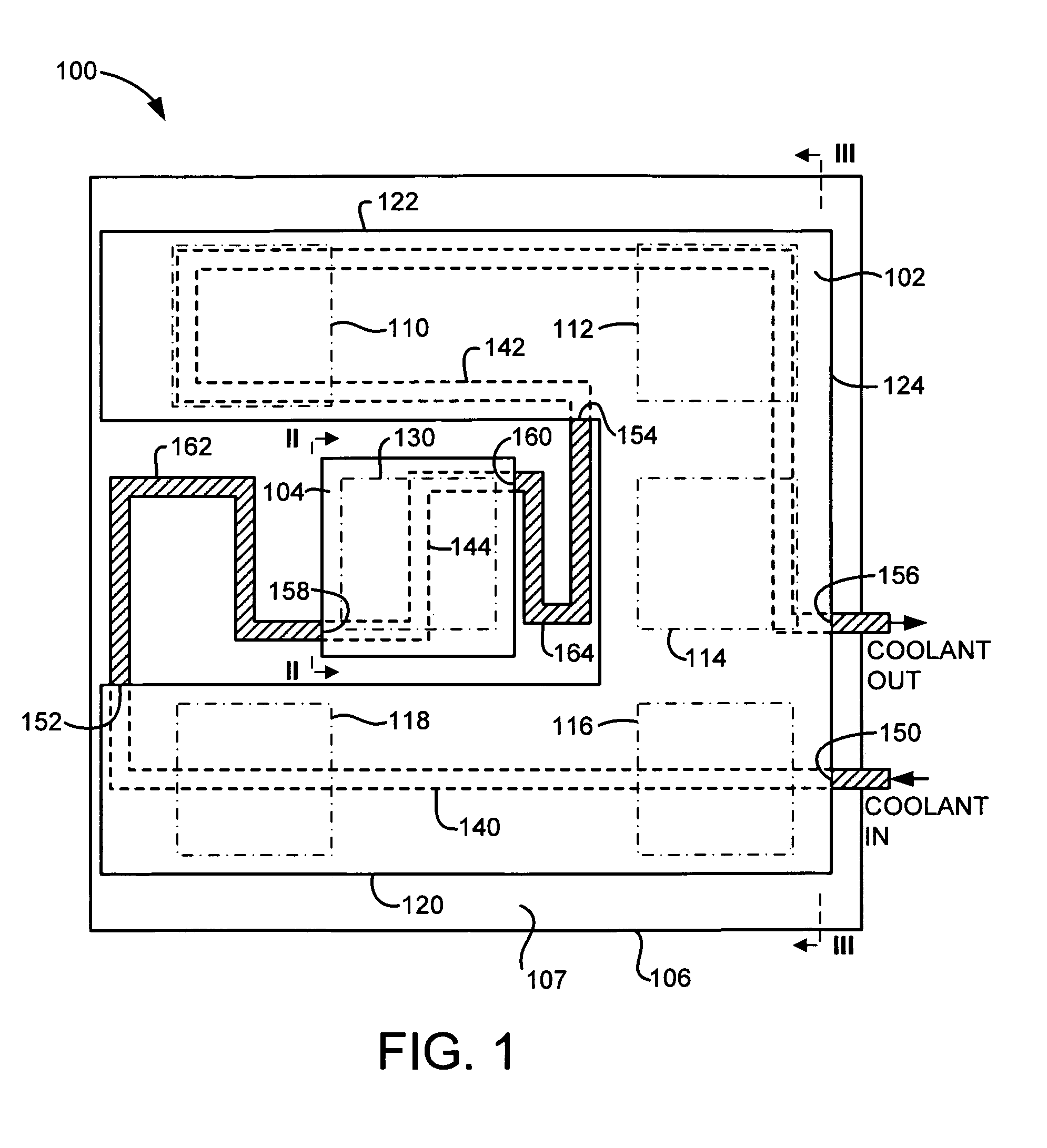Cooling Plate Assembly with Fixed and Articulated Interfaces, and Method for Producing Same
a technology of cooling plate and interface, which is applied in the direction of manufacturing tools, electrical apparatus construction details, and semiconductor/solid-state device details, etc., can solve the problems of reducing the functional performance, reliability and life expectancy of electronic components, and not providing a low enough thermal resistance path. , to achieve the effect of improving the functional performance and reliability of electronic components, and reducing the cost of production
- Summary
- Abstract
- Description
- Claims
- Application Information
AI Technical Summary
Benefits of technology
Problems solved by technology
Method used
Image
Examples
Embodiment Construction
[0022]1. Overview
[0023]In accordance with the preferred embodiments of the present invention, a cooling plate assembly for transferring heat from electronic components mounted on a circuit board includes both fixed and articulated interfaces. A fixed-gap coldplate is positioned over and in thermal contact with (e.g., through an elastomerically compressive pad thermal interface material) electronic components mounted on the circuit board's top surface. An articulated coldplate is positioned over and in thermal contact with at least one electronic component mounted on the circuit board's top surface. In the preferred embodiments, the articulated coldplate is spring-loaded against one or more high power processor components having power dissipation greater than that of the electronic components under the fixed-gap cooling plate. Thermal dissipation channels in the coldplates are interconnected by flexible tubing, such as copper tubing with a free-expansion loop. In the preferred embodi...
PUM
| Property | Measurement | Unit |
|---|---|---|
| power dissipation | aaaaa | aaaaa |
| power | aaaaa | aaaaa |
| thickness | aaaaa | aaaaa |
Abstract
Description
Claims
Application Information
 Login to View More
Login to View More - R&D
- Intellectual Property
- Life Sciences
- Materials
- Tech Scout
- Unparalleled Data Quality
- Higher Quality Content
- 60% Fewer Hallucinations
Browse by: Latest US Patents, China's latest patents, Technical Efficacy Thesaurus, Application Domain, Technology Topic, Popular Technical Reports.
© 2025 PatSnap. All rights reserved.Legal|Privacy policy|Modern Slavery Act Transparency Statement|Sitemap|About US| Contact US: help@patsnap.com



